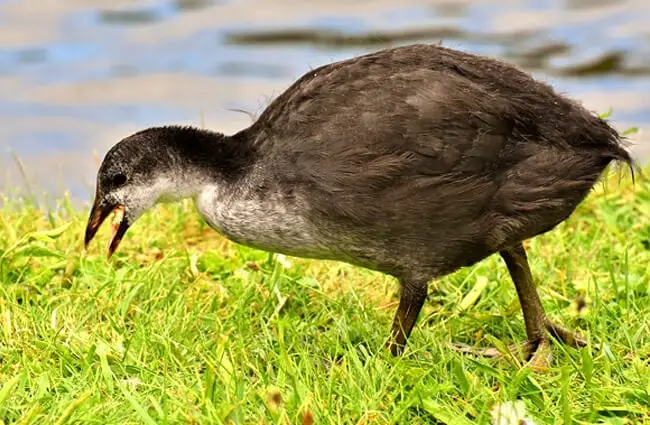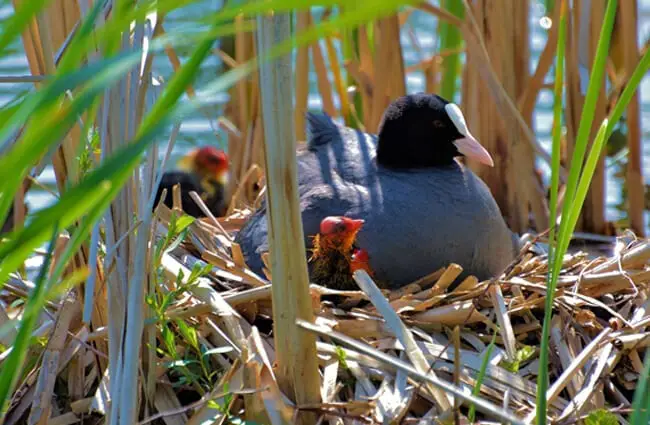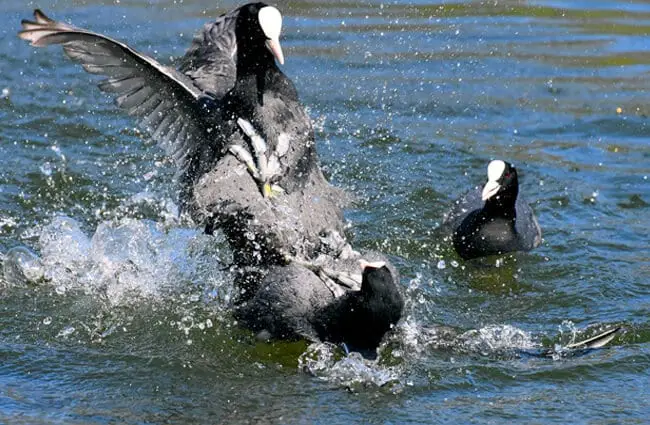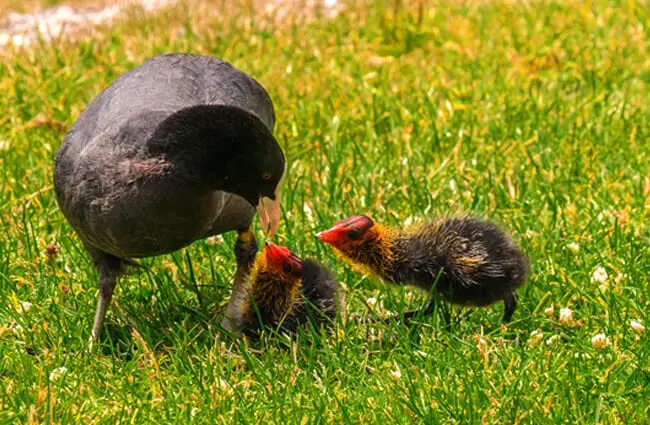The world of waterfowl is remarkably diverse, and within it resides a bird often overlooked, yet brimming with personality and ecological importance—the Coot. While often mistaken for ducks, these birds represent a fascinating evolutionary path and play a crucial role in wetland ecosystems. This guide delves into the life of the Coot, exploring its habitat, behavior, and significance, suitable for both casual observers and dedicated naturalists.
Understanding the Coot
The Coot, scientifically known as Fulica americana, is a medium-sized waterfowl belonging to the Rallidae family, the rail family. This immediately sets it apart from ducks, geese, and swans, which belong to the Anatidae family. This difference is reflected in its physical characteristics and behaviors.
Physical Characteristics
Coots are easily recognizable by their dark gray to black plumage, contrasting white bills, and distinctive lobed toes. These lobed toes are a key adaptation for swimming and foraging in vegetated waters. They lack the oil glands that waterproof the feathers of ducks, resulting in a somewhat soggy appearance, hence the common nickname “mudhen”. Adults typically measure between 15 to 18 inches in length, with a wingspan of around 24 to 28 inches. Males are slightly larger than females and may exhibit a more prominent frontal shield, a patch of dark plumage on the forehead.

Habitat and Distribution
American Coots are found throughout North America, and related species are also present in South America. They inhabit marshes, ponds, lakes, and slow‑moving rivers, preferring freshwater habitats with abundant vegetation that provides food and cover. During the breeding season, they favor sheltered wetlands with ample aquatic plants. In winter, they may migrate to more temperate regions or remain in areas with open water. Their adaptability allows them to thrive in both natural and human‑modified landscapes, though habitat loss poses a significant threat.
Coot Behavior and Ecology
Diet and Foraging
Coots are primarily herbivorous, but also consume small invertebrates. They feed on aquatic plants, seeds, roots, algae, fruits, and occasionally small invertebrates. They are skilled divers, often submerging their heads to reach submerged vegetation. Their foraging behavior is fascinating—they frequently use their bills to uproot plants, creating feeding lanes in dense vegetation. This can significantly impact plant communities, making them an important factor in wetland dynamics.
Social Behavior and Communication
Coots are generally gregarious birds, often found in flocks, especially during the non‑breeding season. They communicate through a variety of vocalizations, including cooing, grunting, and squawking. Their distinctive calls carry across wetlands, signaling their presence to others. They also employ visual displays, such as head‑bobbing and wing‑flapping, to communicate with each other. During the breeding season, Coots become fiercely territorial, defending their nesting sites against intruders.

Reproduction and Life Cycle
Nesting and Breeding
Coots are generally monogamous, forming pair bonds that may last for multiple breeding seasons. They build nests—floating platforms of vegetation—in shallow water, often concealed among reeds or cattails. The nest is typically constructed by both parents. A clutch typically consists of 6 to 12 eggs, which are buff‑colored with dark markings. Both parents incubate the eggs for approximately 24 to 27 days.
Chick Development and Parental Care
Coot chicks are precocial, meaning they are relatively well‑developed at hatching and capable of leaving the nest shortly after. They are covered in downy plumage and are able to swim and feed independently, although they remain under the care of their parents for several weeks. Parents actively defend their chicks from predators and guide them to foraging areas. The young Coots often stay with their parents throughout the winter, learning essential survival skills.

Coots’ Role in the Ecosystem and Interactions with Other Animals
Ecological Importance
Coots play a significant role in wetland ecosystems. Their foraging activities can influence plant community structure, creating open water areas that benefit other species. They also serve as prey for predators such as raptors, foxes, raccoons, and snakes. Their floating nesting platforms also serve as roosting sites for other waterbirds.
Predator‑Prey Interactions
Coots are vulnerable to a variety of predators. They rely on camouflage and vigilance to avoid detection. When threatened, they will often dive underwater and remain submerged for extended periods. They also employ alarm calls to warn other Coots of danger. Coots will sometimes engage in aggressive behavior toward predators, attempting to drive them away from their nests or chicks.
Coots and Humans
Historical and Cultural Significance
Coots have been featured in folklore and art across various cultures. They were historically hunted for food and feathers. Native American tribes often incorporated Coots into their ceremonies and stories.

Conservation Status and Threats
While Coots are currently classified as Least Concern by the International Union for Conservation of Nature (IUCN), their populations are facing increasing threats. Habitat loss and degradation, pollution, and climate change are all contributing to population declines in some areas. Protecting and restoring wetland habitats is crucial for ensuring the long‑term survival of these remarkable birds.
Encountering Coots in the Wild
If you encounter Coots in the wild, observe them from a distance and avoid disturbing their habitat. Do not feed them, as this can disrupt their natural foraging behavior and make them dependent on humans. If you find an injured or orphaned Coot, contact a local wildlife rehabilitation center for assistance.
Advanced Coot Knowledge for the Enthusiast
Evolutionary History
The Rallidae family, to which Coots belong, is an ancient group of birds with a fossil record dating back to the Eocene epoch. Coots share a common ancestor with rails, gallinules, and other wetland birds. Their evolutionary adaptations reflect a transition from terrestrial to semi‑aquatic lifestyles.
Subspecies Variation
Several subspecies of American Coot have been identified, exhibiting subtle differences in plumage, size, and vocalizations. These subspecies are geographically distributed across North and South America.

Captive Care Considerations
For zookeepers and aviculturists, Coots require spacious enclosures with access to clean water for swimming and foraging. Their diet should consist of a variety of aquatic plants, seeds, and a formulated waterfowl feed. Providing nesting materials and secluded areas is essential for breeding success. Regular health checks and monitoring for parasites are crucial for maintaining their well‑being.
The Coot, often overlooked, is a testament to the beauty and complexity of the natural world. From its unique physical characteristics and fascinating behaviors to its vital role in wetland ecosystems, this remarkable bird deserves our attention and conservation efforts. By understanding and appreciating the Coot, we can contribute to the preservation of these essential habitats for generations to come.



![Red Angus Closeup of a beautiful Red Angus cowPhoto by: U.S. Department of Agriculture [pubic domain]https://creativecommons.org/licenses/by/2.0/](https://animals.net/wp-content/uploads/2020/03/Red-Angus-4-238x178.jpg)




![Red Angus Closeup of a beautiful Red Angus cowPhoto by: U.S. Department of Agriculture [pubic domain]https://creativecommons.org/licenses/by/2.0/](https://animals.net/wp-content/uploads/2020/03/Red-Angus-4-100x75.jpg)

